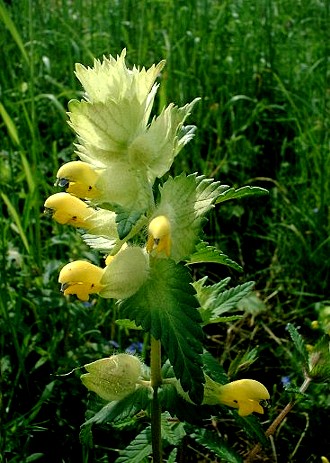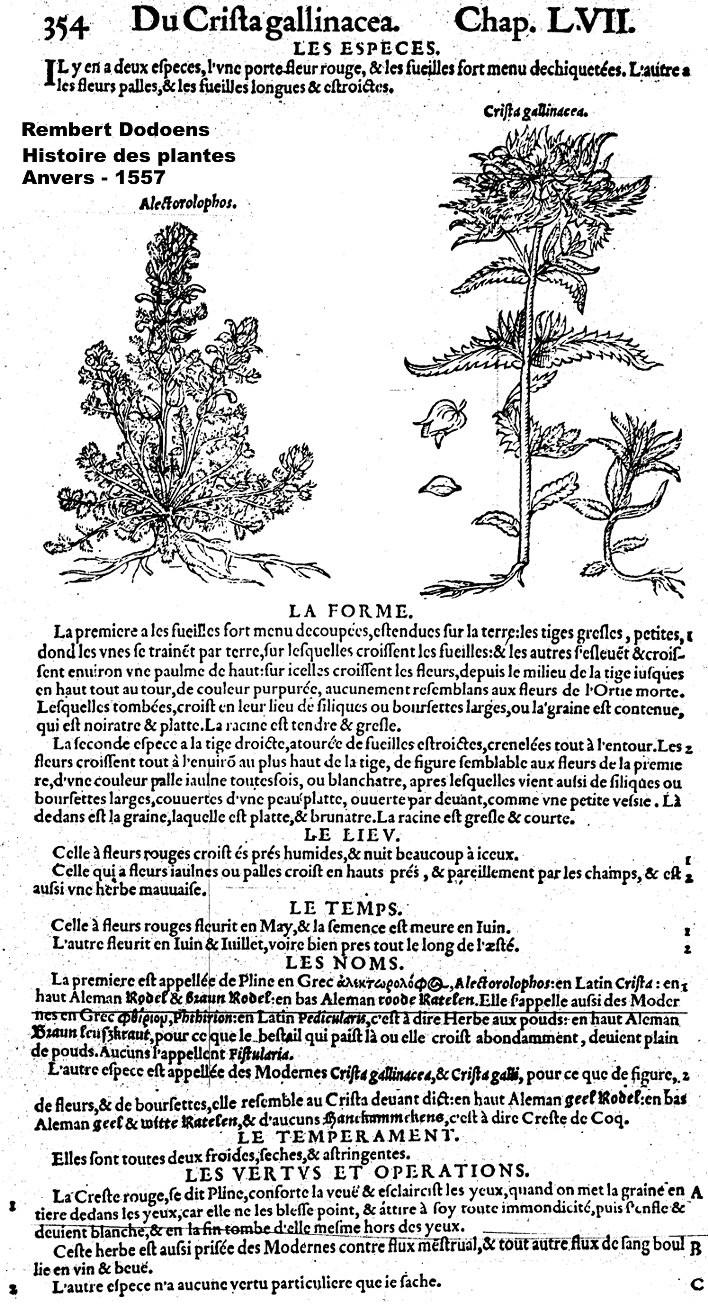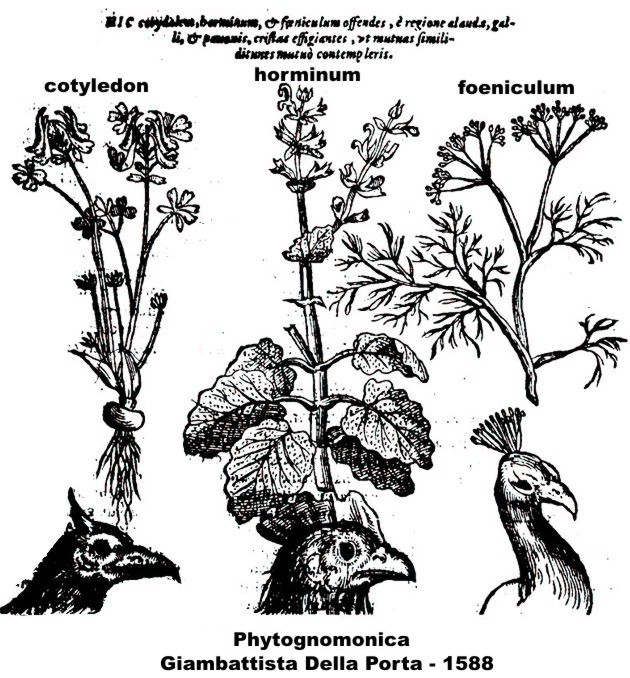Lessico
Cresta di gallo
Rhinanthus crista-galli

Pianta erbacea annua della famiglia Scrofulariacee, frequente nei prati e pascoli dalla zona montana a quella alpina. È una specie semiparassita, alta da 10 a 80 cm, con fusti e rami angolosi, foglie sessili, opposte, ovali oppure oblunghe, dentate come la cresta semplice del gallo.
I fiori,
pure sessili, sono raccolti in spighe terminali fogliate: hanno calice a 4
denti e corolla gialla, gamopetala irregolare, bilabiata; i semi sono
discoidali, alati o non alati, contenuti in capsule orbicolari (e non in
baccelli, come indicato da Plinio![]() ).
).
È diffusa in Europa, Asia occidentale e America boreale in numerose varietà. I semi sono velenosi per la rinantina; se miscelati ai cereali possono conferire alle farine colore azzurro.
Rembert
Dodoens![]() descrive due piante sotto lo stesso nome di Crista gallinacea, ma è quella di
destra, dai fiori gialli, che ha tutte le caratteristiche di essere un
Rhinanthus crista-galli, nonostante i suoi fiori siano raccolti su un piano
terminale anziché in una spiga. Assai più confacente al vero è la sommità
fiorita del
Rhinanthus crista-galli propostaci da Giambattista Della Porta
descrive due piante sotto lo stesso nome di Crista gallinacea, ma è quella di
destra, dai fiori gialli, che ha tutte le caratteristiche di essere un
Rhinanthus crista-galli, nonostante i suoi fiori siano raccolti su un piano
terminale anziché in una spiga. Assai più confacente al vero è la sommità
fiorita del
Rhinanthus crista-galli propostaci da Giambattista Della Porta![]() sotto il nome di horminum
sotto il nome di horminum![]() nel suo Phytognomonica (1588).
nel suo Phytognomonica (1588).
Si
dovrebbe escludere che la Crista gallinacea di Dodoens, per il fatto di
avere i fiori raccolti su un piano
terminale, corrisponda alla Celosia cristata![]() ,
sia per le caratteristiche delle foglie che per il tipo di infiorescenza.
,
sia per le caratteristiche delle foglie che per il tipo di infiorescenza.

Yellow
Rattle
Cockscomb

Yellow Rattle or Cockscomb (Rhinanthus minor) is a flowering plant in the genus Rhinanthus in the family Scrophulariaceae, native to Europe and western Asia. It is a hemi-parasitic herbaceous annual plant that gains some of its nutrients from the roots of neighbouring plants. It grows to 25-50 cm tall, with opposite, simple leaves, with a serrated margin. The flowers are yellow, produced on a terminal raceme. The fruit is a dry capsule, which contain loose, rattling seeds when ripe; the plant's name refers to these. Its preferred habitat is dry fields or meadows, where its flowering period is between June and September. In Ireland and Scotland, this species is often associated with Machair habitat.
Research at the UK's Centre for Ecology and Hydrology has shown that encouraging Yellow Rattle to grow in hay meadows greatly increases biodiversity by restricting grass growth and thereby allowing other species to thrive. The seeds are spread very effectively by traditional hay-making practices.
It can be cultivated by scarifying the surface of the ground with a fork or similar, then sowing onto short grass, 0.5 to 1 gram of seed per square metre. Yellow Rattle seed is short-lived and should always be sown in the autumn, using seed harvested that year. Then, keep grass short for beginning of March when seedlings establish. Thereafter, the grass should not be cut until the end of July to allow the Yellow Rattle to flower and go to seed, then cut short.
